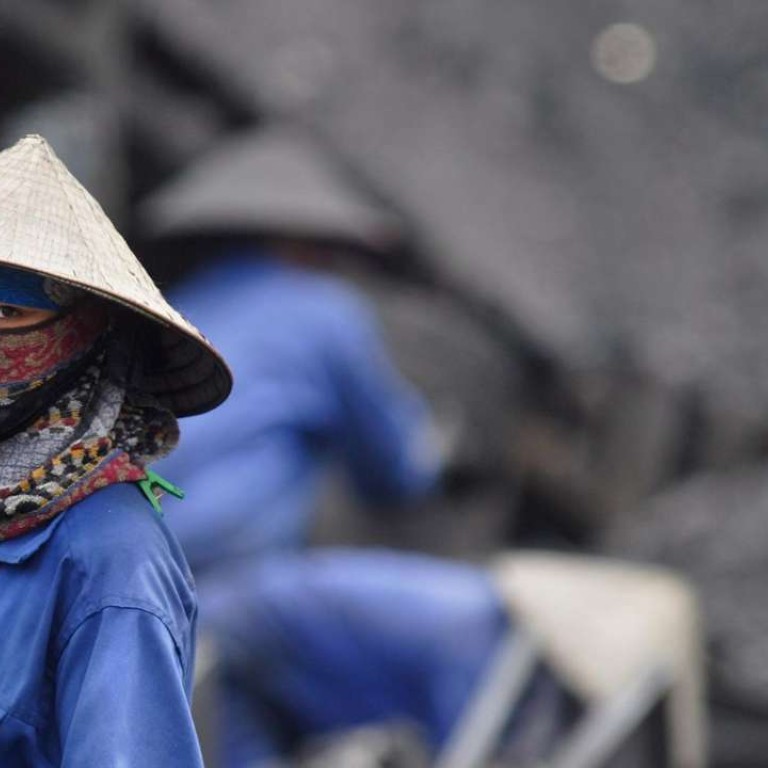
Why is climate-conscious Vietnam choosing coal over nuclear?
Rising costs and environmental fears bring an end to Vietnam’s nascent nuclear power programme, forcing the climate-conscious country back into the embrace of coal
Vietnam’s decision to abandon its nascent nuclear power programme and turn back to cheaper, dirtier, coal says much about where the nation thought it was headed – and about where it has ended up.
The move last month was a blow for the climate conscious and highlights how the nation no longer has the economy to justify the fuel consumption predictions it once did. And it marks how seriously the government now takes public anger over pollution.
Vietnam decides to put nuclear power plant construction plans on ice

Some experts suggest the government’s decision was more about economics than environment, especially given its solution is to turn to coal.
Not only had the cost of the first plant (to have been built by Russian state company Rosatom) doubled, but its power was also going to be relatively expensive.

In recent years, Vietnam’s economic growth has been lower than expected, which has cut predictions for power needs, and public debt has reached 65 per cent of GDP. Vietnam would have had to borrow to pay for the new power station. Conveniently, against this backdrop, coal prices have halved.
Is Vietnam’s new religion law a smokescreen for political repression?
Yet, even if the decision makes sound economic sense, there’s little doubt that fears over pollution are weighing more heavily on the public and, in turn, the government. Taiwan’s scandal underscored how concerned citizens are about pollution, and that they will organise if they feel the government is not doing its job.

“Nuclear waste poses environmental threats even for developed countries which boast good technology for waste treatment,” Le Hong Tinh, vice-chairman of the National Assembly Committee for Science, Technology and Environment, told Dan Tri News.
If it’s difficult for developed countries, then why did a developing nation think it should become Southeast Asia’s first nuclear-powered nation?
Talk of nuclear power began in the 1980s, when Vietnam was benefiting heavily from Soviet aid and skills (most of the country’s scientists and technicians in those post-war, pre-perestroika days studied in the USSR.)
But it was not until 1995 that the first nuclear power plan came about. The Vietnam of the 1990s was an optimistic place, but had a fear of falling behind. To that end it began the infrastructure drive that would give it some of the best internet coverage in the region and began a foreign affairs push that continues today.

Thousands in Vietnam protest against Taiwanese steel plant over mass fish deaths
Given this background, it’s perhaps unsurprising that by 2009 then Prime Minister Nguyen Tan Dung was turning to nuclear to address the power shortages identified as one of the chief brakes on Vietnam’s economic growth. The prime minister was a man who pursued growth with abandon and chased foreign direct investment and big-ticket projects even when it affected his popularity within the party.
Ambitious nuclear plans appealed to the grandiose in Dung, and were fuelled by projections that electricity demand would grow by 20 per cent a year (a figure since recalibrated to 11 per cent a year).
Vietnam signed a deal to build two nuclear power reactors in southern Ninh Thuan province in 2009. Within two years, the plans had expanded to eight reactors, a decision made public around the time of Japan’s Fukushima disaster (when an earthquake and tsunami led to the meltdown of three nuclear reactors and release of radioactive material.)

Vietnam was strident post-Fukushima that its plants would be safe. The Ministry of Foreign Affairs said in 2011: “Vietnam [sees] nuclear safety-related issues as a top priority. This is particularly important in the context of climate change and natural disasters, particularly the earthquake and tsunami [in Japan].”

Vietnam is not earthquake-prone, but typhoons can be a problem – one that is growing due to climate change. The country is forecast to be one of the region’s worst-hit by climate change, despite its emissions even now being relatively low. It is particularly concerned about droughts, floods and more violent storms.
Despite the concerns, Professor Carlyle Thayer at the Australian Defence Force Academy is another who believes economic concerns were the chief reason for the rethink. “The National Assembly deputies argued that projections for energy demand have slowed considerably. They pin their hopes on cheap coal without regard for its impact on climate change,” he said.

And so it is that a Vietnam concerned with climate change finds itself in the seemingly contradictory position of turning to coal over nuclear – a move that will entail axing the country’s carbon emissions pledges from the 2015 UN Convention on Climate Change, according to Brown, the former US diplomat. Coal is forecast to move from 30 per cent of the power supply to 50.

Thayer added: “After military sales, the No 2 area of Russian investment is energy – hydropower, oil and gas and nuclear. This will be a significant setback.”
For climate-conscious Vietnam, going back to coal may be a step backwards, but at least it is a relatively cheap one. At least for now. ■

